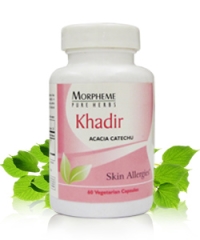Table of Contents
The unsightly scars left behind on the facial skin after the acne rashes heal can be erased with the help of laser treatment. It is one of the latest options for clearing stubborn acne scars that do not respond to conventional skin lightening creams and topical medications.
Different laser treatment options are available for erasing acne scars. Depending upon the nature of the scar, fractional non-ablative laser resurfacing or fractional ablative laser resurfacing is used for treatment. Laser treatment is considered safe. When performed by an experienced dermatologist or cosmetic surgeon, it ensures the best outcome.
Laser Treatment Options For Acne Scars
CO2 Laser Resurfacing
CO2 laser is traditionally used in the laser resurfacing procedure. It works by vaporizing the surface skin cells. The latest CO2 laser resurface procedure uses very short pulsed light beam called ultrapulse for treating acne scars. Another CO2 laser resurfacing technique involves continuous delivery of light beams in a controlled manner to minimize heat damage while thin layers of skin are removed from the surface. It usually takes about two weeks for complete recovery.
Erbium Laser Resurfacing
Erbium is an alternative to CO2 laser resurfacing. It is appropriate for treating deep scars. It is considered more effective and safe than the traditional CO2 laser resurfacing procedure.
It causes minimal heat damage to the healthy tissues surrounding the acne scar. A fewer side effects, such as mild bruising, swelling and redness, ensure minimum recovery time. Erbium laser resurfacing is ideal for treating an acne scar in people with dark skin tone.
Also Read
Acne Scar Removal
Acne Scar Treatments
Acne Scar Removal Techniques
Herbal Treatments for Acne Scars
Acne Scar Removal
Fractional Non-ablative Skin Resurfacing
Fractional skin resurfacing or laser skin resurfacing is currently the most popular laser treatment choice for clearing acne scar. Fractional non-ablative skin resurfacing is a simple laser resurfacing technique that stimulates skin growth by heating the affected area of the skin where the laser beam is targeted. This is a safe procedure with minimal risk of side effects. Since this is a painless procedure, topical anesthesia is usually not applied during treatment.
The treatment procedure lasts for a few minutes. It takes about 12 minutes to complete a full-face treatment. Mild swelling or redness of the treated skin may occur after treatment, which usually heals naturally within a short time. As no open wound in present in the treatment site, the treated skin heals rapidly. The latest non-ablative laser skin resurfacing technology ensures that only heat sufficient for stimulating collagen growth is applied to the scar. Hence, there is no risk of overheating the skin. In some cases, multiple treatments may be needed for erasing stubborn scars.
Recommended Products
Fractional Ablative Skin Resurfacing
In fractional ablative skin resurfacing, the epidermis in the affected area is destroyed to expose the dermis, which is then heated to stimulate collagen production. The new skin that develops at the site of the wound blends with the natural skin tone.
As the ablation procedure can be controlled, cosmetic surgeons can customize the process to suit the individual needs of the patient. Usually a single treatment is sufficient for removing the acne scar. In most cases, patients resume their routine activities within a few days after the procedure.
For ensuring maximum outcome and minimum recovery time, fractional non-ablative skin resurfacing procedure is combined with the ablative skin resurfacing procedure.
Caution: Please use Home Remedies after Proper Research and Guidance. You accept that you are following any advice at your own risk and will properly research or consult healthcare professional.








